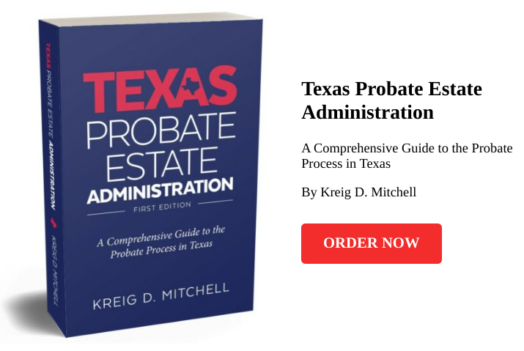Most married couples assume that when one spouse dies, their retirement assets will automatically pass to the surviving spouse. But what happens when both spouses die within days of each other?
Do Texas survival statutes requiring a beneficiary to survive the deceased by 120 hours apply to ERISA retirement plans? Or do the plan documents themselves control distribution regardless of state law?
The recent case of Estate of Michael John Phillips, No. 09-21-00284-CV, 2023 WL 6156080 (Tex. App.—Beaumont Sept. 21, 2023), address this very question.
Facts & Procedural History
Michael and his wife Laurie both died within days of each other. The record showed that Michael survived Laurie by “a few days” but not by the 120 hours (five days) specified in the Texas Estates Code’s survival statute.
At the time of her death, Laurie participated in her employer’s 401(k) plan and profit-sharing plans. She had designated Michael as the primary beneficiary and her brother, Richard, as the contingent beneficiary. Michael’s sole heir was his brother, James.
Following the deaths, James filed an application to determine heirship and appointment as independent administrator of Michael’s estate. Stanley filed similar applications in Laurie’s estate proceeding, where he alleged that Laurie had predeceased Michael but that Michael had died “within days after” Laurie. Based on the Texas survival statute, Stanley claimed Michael was not an heir under Section 121.052 of the Texas Estates Code.
When Lourie’s employer determined that the retirement plan benefits should go to Michael’s estate, James filed a petition for declaratory judgment seeking to have the court declare that Michael was entitled to the proceeds of Laurie’s retirement plans. James then filed a motion for summary judgment arguing that the plan documents controlled distribution, not the Texas 120-hour survival rule.
The probate court handling the litigation granted James’s motion for summary judgment, awarding the retirement benefits to Michael’s estate. Stanley then sought a permissive interlocutory appeal.
The Texas Estates Code Survival Requirements
The Texas Estates Code Chapter 121 contains various survival requirements that can significantly impact inheritance rights. Section 121.052 addresses intestate succession and generally requires that an heir survive the decedent by 120 hours to inherit property. Similarly, Section 121.102 mandates that a beneficiary survive a property owner by 120 hours to receive property if survival is a condition of transfer.
However, an important exception is in Section 121.001, which states:
“This chapter does not apply if provision has been made by will, living trust, deed, or insurance contract, or in any other manner, for a disposition of property that is different from the disposition of the property that would be made if the provisions of this chapter applied.”
This exception creates a significant carve-out from the 120-hour survival requirement when specific documents contain different provisions for property distribution.
How Does the Texas Estates Code Handle Employee Benefits?
The Texas Estates Code contains specific provisions addressing employee benefit plans. Section 111.051(1-a)(C) defines “employees’ trust” to include “an employer-sponsored benefit plan or program” under ERISA.
More importantly, Section 111.052 provides that the code does not invalidate provisions in employees’ trusts stating that benefits due to a decedent shall be paid after death to a person designated by the decedent in the instrument. Such provisions are expressly deemed “nontestamentary” under Section 111.052(b).
These provisions explain that Texas law specifically recognizes and respects beneficiary designations in employee benefit plans, including 401(k) plans and other retirement accounts governed by ERISA.
Do Plan Documents or State Survival Statutes Control?
So to the question that was posed in the intro. The central question in the Phillips case was whether the plan documents or the Texas 120-hour survival statute should control the distribution of Laurie’s retirement benefits. The court analyzed this question by examining both the plan documents and relevant provisions of the Texas Estates Code.
The retirement plan documents specified that benefits would be paid to the primary beneficiary unless they “otherwise ceased to exist before” the participant’s death. The plans did not contain any provision requiring the beneficiary to survive the participant by 120 hours or any other specific timeframe.
The court determined that since the plan documents qualified as “provision… made” in “any other manner” and included “a disposition of property that is different from the disposition of the property that would be made if the provisions of this chapter applied,” Section 121.001 precluded the applicability of the 120-hour survival requirement to the retirement plans. So ERISA law dictated how the plan was distributed.
When Does a Beneficiary “Cease to Exist”?
The language in Laurie’s employer’s retirement plan documents was particularly important in this case. The plans specified that the primary beneficiary would receive benefits unless they “otherwise ceased to exist before” the participant’s death. This may vary from plan to plan. For plans that have this language, there is a question as to what it means for a beneficiary to “cease to exist”?
The court interpreted this phrase straightforwardly, determining that since Michael was alive when Laurie died, he had not “ceased to exist” and therefore qualified as the primary beneficiary under the plan documents. The court concluded that survival by 120 hours was not required by the plan documents, which only required that the primary beneficiary be living at the time of the participant’s death.
The ERISA Preemption and Its Impact on Beneficiary Designations
The phrase “ERISA preemption” refers to the legal doctrine that allows federal ERISA law to supersede (or “preempt”) state laws that relate to employee benefit plans.
This doctrine stems from Section 514(a) of ERISA, which explicitly states that ERISA “shall supersede any and all State laws insofar as they may now or hereafter relate to any employee benefit plan” covered by ERISA.
The Supreme Court has interpreted this preemption clause broadly. In Egelhoff v. Egelhoff, 532 U.S. 141 (2001), the Court held that ERISA preempted a Washington state statute that automatically revoked beneficiary designations to former spouses upon divorce. The Court reasoned that forcing plan administrators to look to state law to determine beneficiary status would undermine ERISA’s goal of establishing uniform administrative procedures.
Similarly, in Kennedy v. Plan Administrator for DuPont Savings and Investment Plan, 555 U.S. 285 (2009), the Supreme Court emphasized that plan documents control the payment of benefits, and plan administrators must follow the plan documents as written rather than looking to outside agreements or state law.
How Does ERISA Interact with State Probate Law?
While the case references ERISA, the court specifically avoided addressing ERISA preemption directly. Instead, the court focused on the Texas Estates Code’s own provisions that recognize the right of employee benefit plans to dictate distribution in ways that might differ from general probate rules.
The court noted that under ERISA, plan administrators are duty-bound to act in accordance with plan documents if they are consistent with ERISA. The Supreme Court in Kennedy v. Plan Administrator for DuPont Savings and Investment Plan emphasized that ERISA’s purpose includes minimizing administrative and financial burdens on plan administrators, who should be able to determine distribution instructions from plan documents without court intervention.
In this case, Laurie’s employer reviewed the plan documents and determined that (1) Michael should receive the benefits as the primary beneficiary, and (2) the Texas survival statutes did not apply. The court upheld this determination as consistent with both the plan documents and relevant provisions of the Texas Estates Code.
The Takeaway
This case provides important guidance on how Texas courts handle retirement plan documents and state survival statutes. The court clarified that when retirement plan documents specify distribution methods that differ from the Texas 120-hour survival rule, the plan documents control. This is in addition to the ERISA pre-emption rules, which the court did not have to address given the language in the plan.
Do you need help with an inheritance or heirship matter in Houston or the surrounding area? We are Houston probate attorneys. We help clients navigate the probate process. Call today for a free confidential consultation, 281-219-9090.
Our Houston Probate Attorneys provide a full range of probate services to our clients, including helping with litigation involving inheritance rights. Affordable rates, fixed fees, and payment plans are available. We provide step-by-step instructions, guidance, checklists, and more for completing the guardianship process. We have years of combined experience we can use to support and guide you with guardianship and probate matters. Call us today for a FREE attorney consultation.
Disclaimer
The content of this website is for informational purposes only and should not be construed as legal advice. The information presented may not apply to your situation and should not be acted upon without consulting a qualified probate attorney. We encourage you to seek the advice of a competent attorney with any legal questions you may have.











